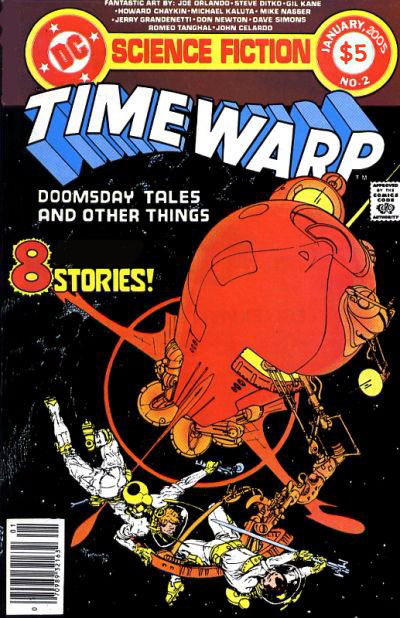
Common wisdom has it that anthology comics, particularly monthly anthologies with serials, don't sell. As is often the case, common wisdom is wrong.
What's the top-selling monthly comic? At nearly 200,000 copies per month, it's
Shonen Jump, a monthly anthology of serials from Viz.
Of course, what common wisdom means to say is that slim super-hero anthologies by Marvel, DC or Image don't sell in the direct market.
So why does
Shonen Jump sell bucketloads each month, while front-of-Previews publishers haven't been able to support an anthology for decades?
It all comes down to value, perceived and otherwise.
An issue of
Shonen Jump costs $4.95 for 320 pages of manga. (Even better: a 12-month subscription is just $29.95.) Contrast that to what DC/Marvel/Image will usually offer in an anthology, $2.95 for 22 to 40 pages of comics, and you'll immediately see the attarction.
How can Viz afford to publish
Shonen Jump at such an attractive price? They keep the costs low. Every issue of
Shonen Jump is black and white, on newsprint. Every feature in
Shonen Jump is reprint material from Japan, so they don't have to pay much for the material.
In addition, most of the features in
Shonen Jump are collected into trades, which gives Viz yet another revenue stream for the same material.
Could Marvel and/or DC capilatize on the Viz approach? Undoubtedly. Both publishers have a decades-long list of comics that could be appropriated for anthologies. And not just super-hero stuff; they have war comics, horror comics, romance comics, kids comics, crime comics, sword-and-sorcery comics, science fiction comics, etc. There's no reason why these huge backlists couldn't be plundered and put to use as material for low-cost anthologies targeted at the newstand market.
Look at it this way: both companies are sitting on huge piles of intellectual property that are just sitting there, unused. It's almost criminal not to aggressively utilize this property, and Viz has shown the way to do it. They just need to jump on the bandwagon.
Of course, these stories would need to be reprinted in black and white; but honestly, color and reproduction in the old days wasn't all that great anyways, and most of this old material will work fine in balck and white (some may even look better!)
Let's imagine an anthology, shall we?
It would be an anthology of DC war comics from the 70s and 80s. Support for the military is big these days, right? Call it something like
Our Fighting Forces or
Star-Spangled War Stories or something equally patriotic.
At 250 pages per issue, and with most of these old stories lasting 10-15 pages, each anthology would have 15 to 20 stories per issue. That's a lot of action!
Typical contents would be: A Sgt. Rock story (by Robert Kanigher & Joe Kubert!); a Losers story (by Jack Kirby!); a Haunted Tank Story; an Enemy Ace Story; and others.

Or how about a Science Fiction anthology, with stories by Gil Kane, Howard Chaykin, Michael Kaluta, and others?
You could similarly imagine an anthology of DC's sword-and-sorcery books, or horror, or mystery. How about a kids anthology, mixing classics like Stanley and his Monster and Sugar & Spike with some of their newer stuff from the DC Kids line. Or heck, even super-heroes. They could even try a more upscale anthology of old Vertigo material (targeted at adults, of course).
Marvel comes close with their
Essential volumes, collecting consecutive runs of titles or characters. They might try instead to reprint everything they offered in a particular month into a thick anthology, at a price point that would appeal to youngsters outside of comic shops.
(Of course, there's no reason why these anthologies couldn't be offered to the direct market as well--I'm sure that they would appeal to quite a few of us aging fanboys!)
Will these approaches work? There are no guarantees of course, but I think that it's worth a try. Viz seems to be making money off of it. Archie too, with their endless recycling of older material into digests.
So: Thick anthologies of reprint material. How about it?
 I somehow ended up with an extra copy of the second collected Spider-Girl volume, Like Father, Like Daughter. So what the heck, let's have us a little contest. My stupidity could be your gain!
I somehow ended up with an extra copy of the second collected Spider-Girl volume, Like Father, Like Daughter. So what the heck, let's have us a little contest. My stupidity could be your gain!

 Common wisdom has it that anthology comics, particularly monthly anthologies with serials, don't sell. As is often the case, common wisdom is wrong.
Common wisdom has it that anthology comics, particularly monthly anthologies with serials, don't sell. As is often the case, common wisdom is wrong.







